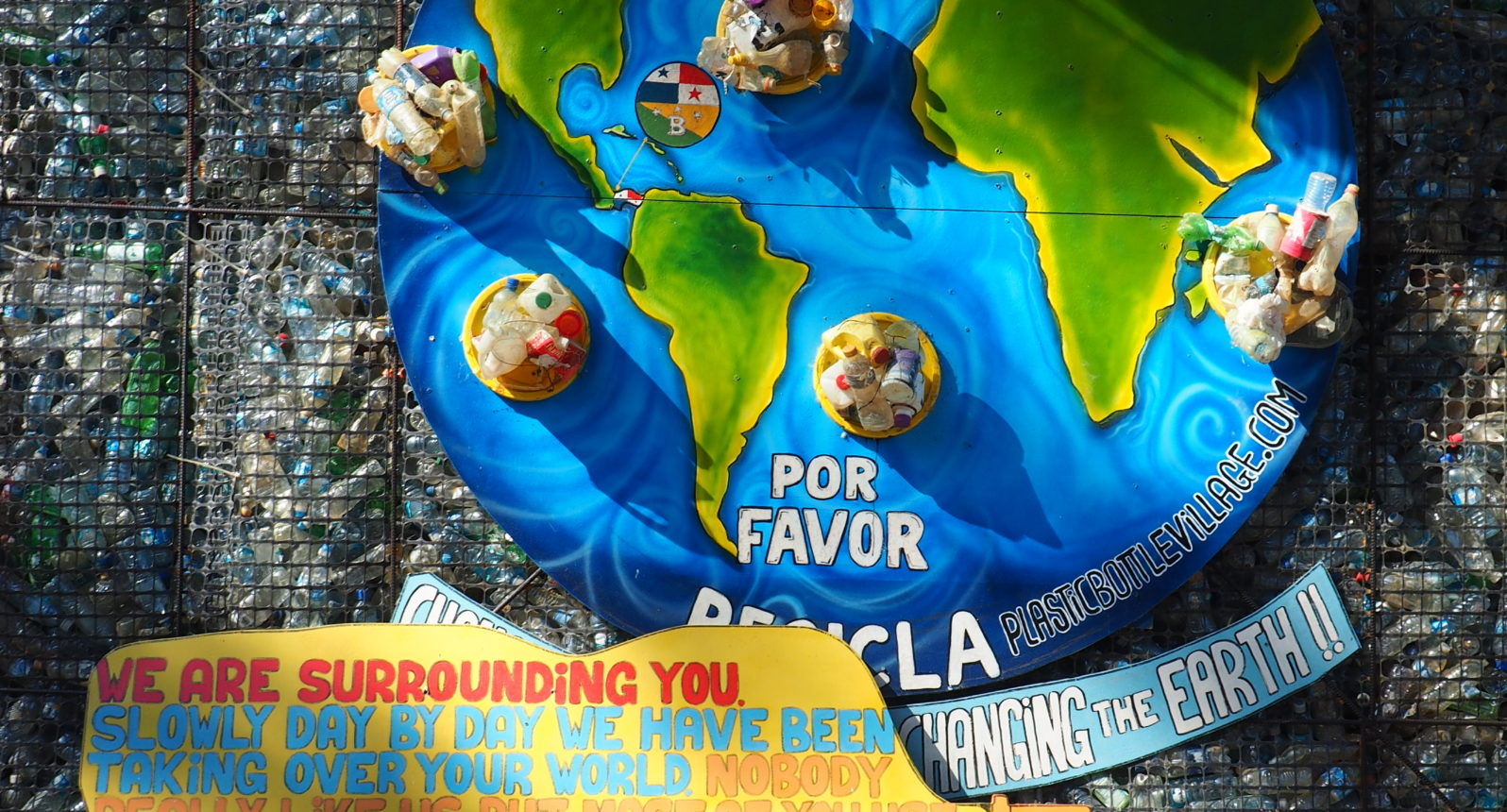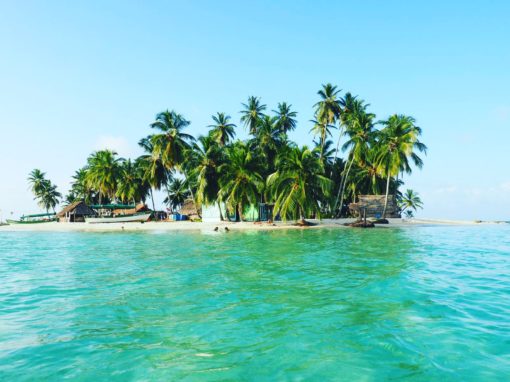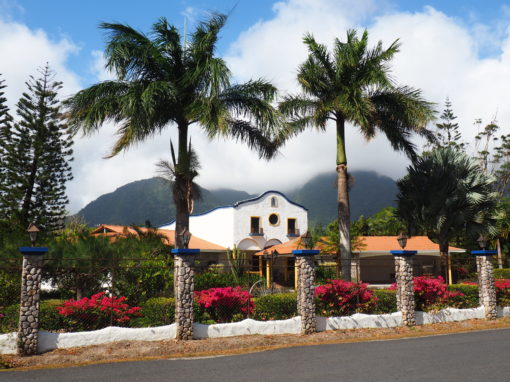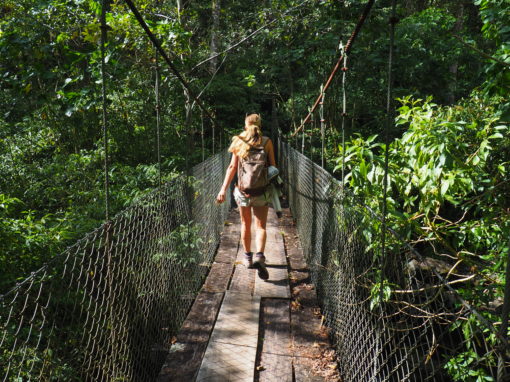WHAT: A visit to an ecological village in Bocas del Toro WHERE: The main island, Isla Colón. About a 30 minute bicycle ride from the port HOW LONG: About an hour HOW MUCH: Free, it’s just for those who are interested in this ecological project, OR if you have some empty PET-bottles
It’s about 35 °C degrees and the sun shines vigorously on Isla Colón, the main island of Bocas del Toro in Panama. Not the best moment for a bike tour during the hottest hours of the day, so we discover. But my boyfriend and I are already on our way to the so-called ‘Plastic Bottle Village’, created by environmentalist Robert Bezeau (67). His village isn’t all too difficult to find; signs telling about the impact of plastic bottle consumption are located everywhere on the island’s main road towards Boca del Drago’s famous starfish beach. After a half an hour ride we arrive at Bezeau’s terrain, which is tucked away on a hill in the jungle. He awaits us with some ice-cold beers – bottled in glass, welcomed most by us. “If only all the drinks in the world would be served in either glass or carton”, sighs Bezeau after he takes a sip. “It would make such an ecological difference”.
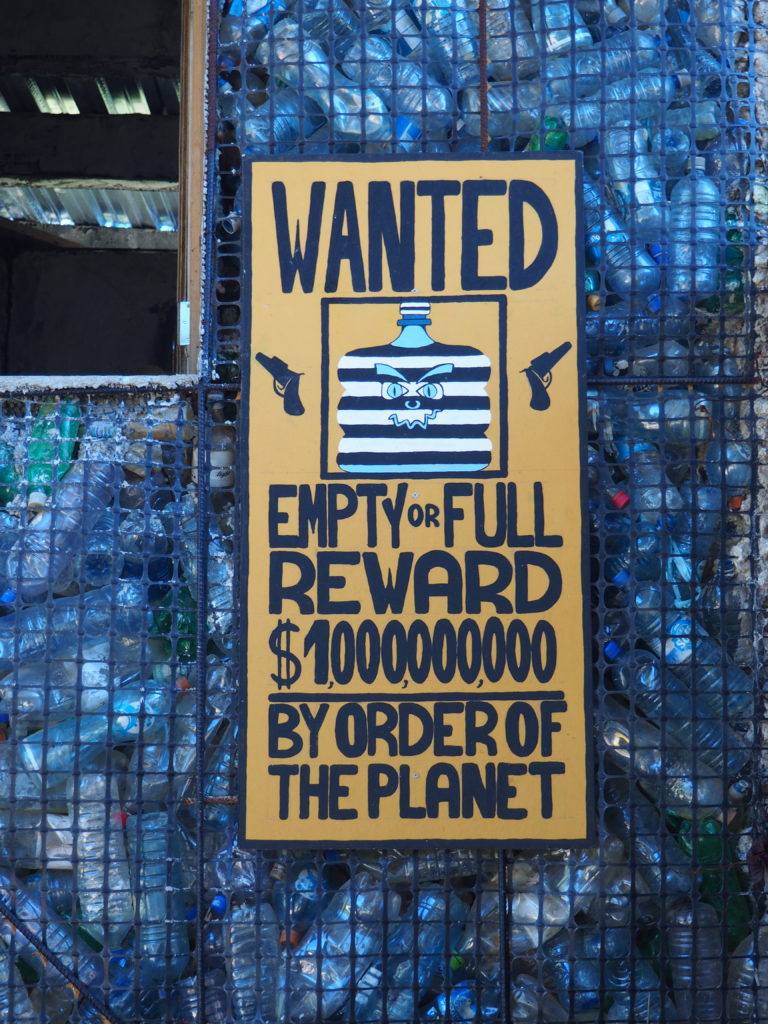
The desk at the entrance where people can leave their plastic bottles
Bezeau, a born French Canadian, left Montreal for Panama on his quest for warmth and sunlight in 2009. The archipelago of Bocas del Toro was already increasing in popularity by then. ”From the beginning I saw the rapid development and its corresponding problems on Isla Colón.” After all, the more tourists, the more trash they bring in. “It was clear to me this was a very sincere problem”.
To act in line with his concerns, Robert simply started picking up bottles. “Otherwise they would have end up in the ocean”, he explains “or they would have been burned just a bit further up the hill; a process that releases a lot of chemicals”. In an effort to join forces, Bezeau started the Bocas Recycling Program in 2012. Soon his stash of trash was piling up. “For months I was thinking about what to do with it. I was even dreaming about it every night. And then one day when I woke up –the idea of building houses just popped up in my head and I knew I had found my purpose!”.
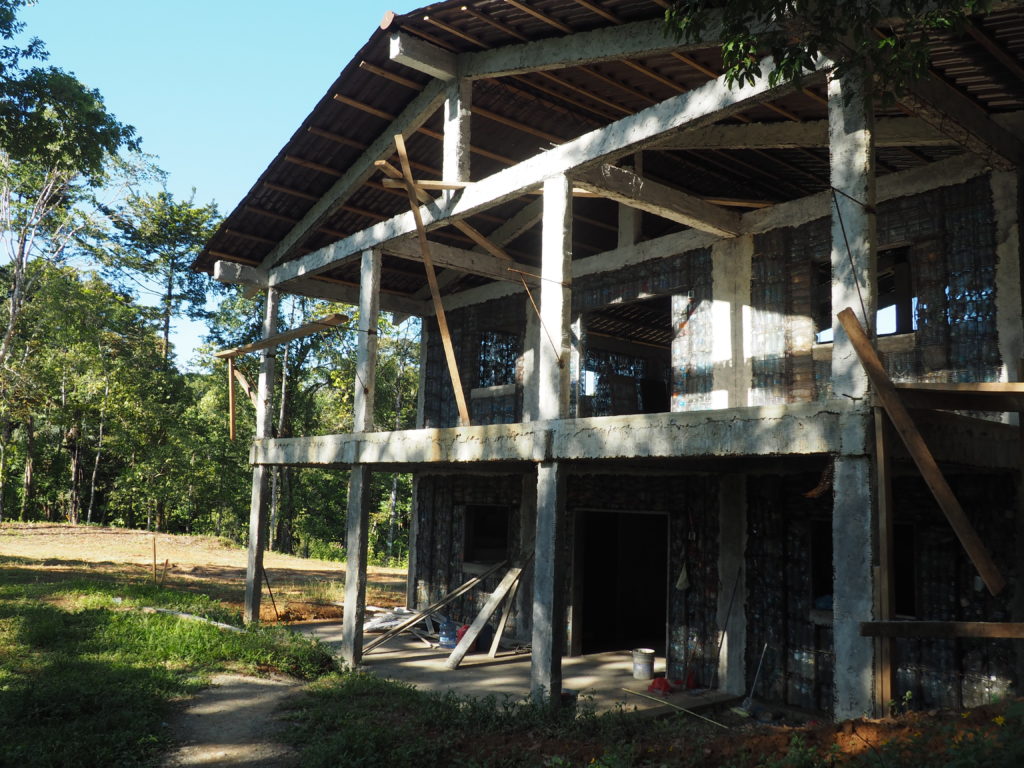
The biggest of the nearly finished houses
Bezeau and his team are working hard to construct an eco-residential community, spread on 83 acres of established jungle. “The project is going quite fast, as we only started thirteen months ago. We’re planning on building a village with some 120 buildings”, says Robert as he guides us around the area. Currently the construction workers are building the entrance of the village, which looks like a castle.
Three other buildings have almost been realized. Robert points out were he plans to locate the vital core of the village. “Here around this hilltop would be a nice place. The houses have a nice view in here on the valley in the middle. And it’s not far from the sea either”.
The first couple that’s going to live in one on the houses is visiting the village too. Calmly Jeff and Justine Catalano walk around with their 3 months old baby Jai. “With an increasing world population and a globally increasing level of consumption, there is a need for more sustainable initiatives when it comes to plastic”, Robert continues. According to the environmentalist, the average human consumes roughly 15 or more drinks in plastic bottles a month. “So if you were born after 1978 – the year that Coca Cola introduced the plastic bottle to the world- and will live up to 80 years old, you will leave behind a minimum of 14400 plastic bottles on this planet.” Bad thing is they won’t be gone easily. “These bottles take hundreds of years to break down into tiny pieces of plastic, never to disappear completely. Fish and birds consume most of the waste, which has shortened their lifespans greatly. Plus they will be eaten by humans.” Bezeau know that the plastic bottle house doesn’t solve the problems that come with making such bottles in the first place, “but you could neutralize your plastic bottle footprint on the planet once you’re living inside of what you have consumed and thrown away”.
We walk towards the biggest house, soon to be completed and thus still revealing part of its construction. The design gives a feeling of simplicity and the outlook doesn’t seem much different compared to a conventional house. The workers first put the bottles in a cage made out of (used) wire, next they weld several cages to one another before they implement electricity and drainage systems. In the end the cover the boxes with concrete.
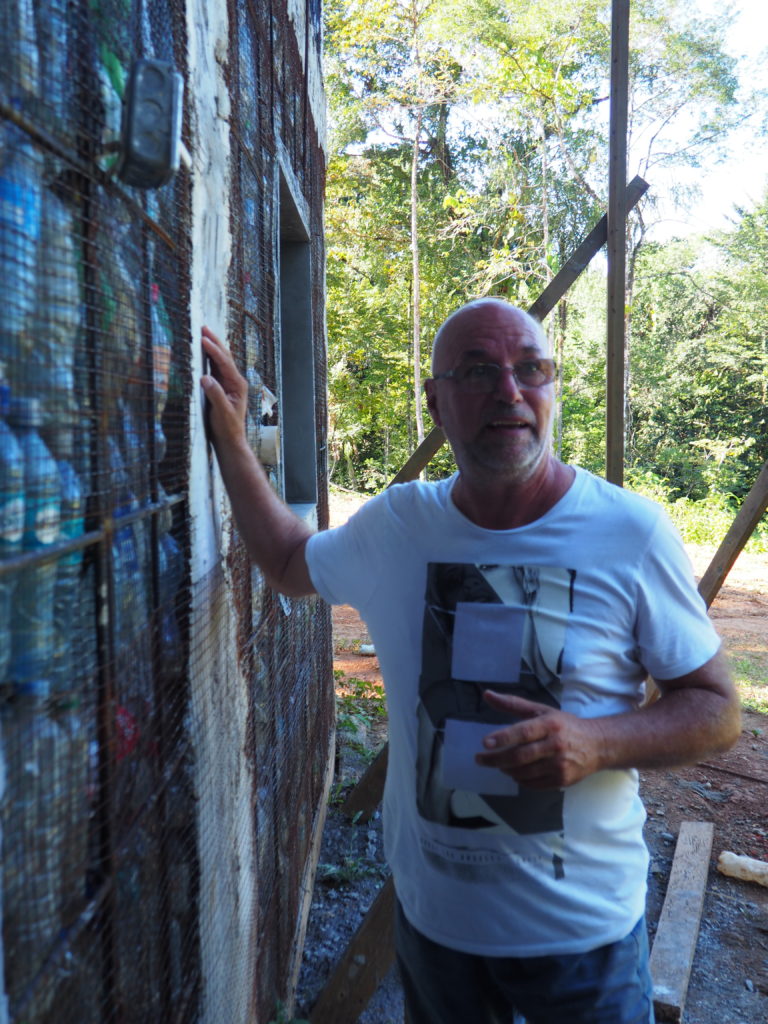
Bezeau explaining the concept of the design
This big house contains some 22.000 plastic bottles. Not only reusing them is a great thing, according to Bezeau plastic as a construction material offers other surprising benefits too. “The home can be up to 17°C cooler on the inside compared to its surrounding, on a hot sunny afternoon like this. The heat is passed through the air in the bottles. Even on a tropical island as Colón you wouldn’t need other energy inputs such as air-conditioning.” Bezeau also claims the houses are earthquake resistant. “The plastic is extremely strong but flexible. It’s like with bridges; if they’re too rigid, they’ll fall apart. The wired frame of the house guarantees the strong base on the other hand. I believe it to be even safer than a house of bricks”.
Next to the creation of this eco-village, Bezeau and his team are developing other ideas as well. Currently they are talking with a company that develops sustainable products in India. “We’re trying to create square bottles together, which we can easily click into on another”. It’s the typical “if you can’t beat them, join them” kind of thinking. “Yeah it might sound a little odd, but it would make construction a lot easier. And you might ask yourself; why are bottles round anyway?”.
While I’m crushing my mind about that question, Robert rushes to his Mac in order to show me the currents designs of the square bottles. They remind me of Lego blocks, evoking some Proustian memories. “This clickable system would be efficient as well in case of natural disasters.” Bezeau clarifies. “Imagine those bottles with water being dropped on affected places; people could instantly start creating a shelter for themself!”.
Next to this aim, Robert’s biggest desire is to help re-constructing plastic bottles into modern residencies all around the world. “Many people already approached me with questions. I’d really like to spread our knowledge about eco-building techniques, and establish a training center in here. Made out of plastic of course”, he adds with a smile. “I know I’m just one crazy person, but I hope I can find many more crazy ones who want to make a difference”.
For more information about the project visit the webpage
